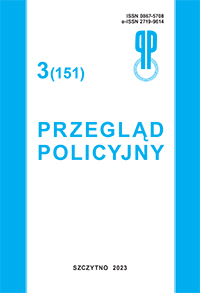„Super SAR” i inne rozwiązania na rzecz niepojedynczego rozpoznawania i zgłaszania podejrzanej aktywności ML/FT przez instytucje obowiązane
„Super SAR” and other solutions for non-single recognition and reporting of suspicious ML/FT activity by obligated institutions
Author(s): Maciej Aleksander KędzierskiSubject(s): Economy, Law, Constitution, Jurisprudence, Supranational / Global Economy, Criminal Law, Financial Markets, Administrative Law
Published by: Akademia Policji w Szczytnie
Keywords: „Super SAR”; joint/cumulative SAR; report; money laundering; financing of terrorism; obligated institution
Summary/Abstract: Reporting SAR to financial intelligence units is the performance of the obligations of the obligated institutions under the AML/CFT system. These actions are taken as a result of an individual customer/transaction risk assessment, as well as a countermeasure policy based on the analysis and assessment of institutional risk. Such structure of the behavior of the obligated institutions was to be a counterbalance to potential and actual perpetrators of money laundering and terrorist financing crimes. As a consequence, individually obligated institutions were to recognize the components of a broad chain of perpetration, legalization of funds originating from prohibited acts and constituting an element of camouflage of the source and beneficiaries of funds intended for terrorists. Over time, the ineffectiveness of this type of countermeasures began to be noticed, especially since the information provided to the financial intelligence unit was to a small extent positively verified and sent to the prosecutor's office as notifications of suspected crime. Subsequently, new counteracting schemes based on the participation of several obligated institutions and mutual exchange of information on negatively marked entities began to emerge. These concepts, despite the fact that they differ both in terms of content and technical implementation, constitute an important counterbalance to individualized analyzes of risk created and assessed exclusively in a particular, individualized obligated institution
Journal: Przegląd Policyjny
- Issue Year: 151/2023
- Issue No: 3
- Page Range: 92-119
- Page Count: 28
- Language: English, Polish

